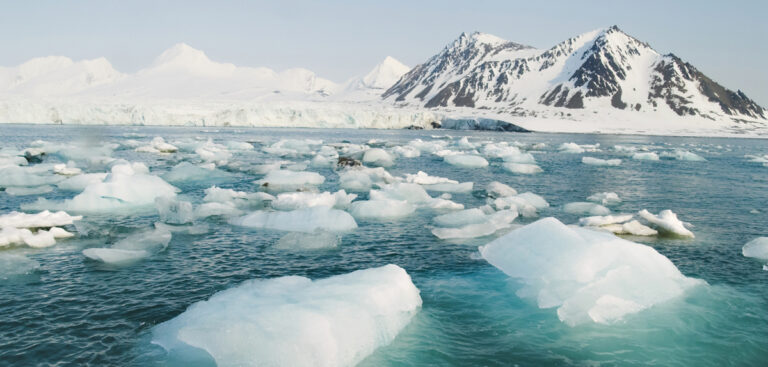A major ocean current in the Arctic is faster and more turbulent due to rapid sea ice melt, according to a NASA study.
Using 12 years of satellite data measuring the circular current called the Beaufort Gyre, scientists say it has precariously balanced unprecedented amounts of cold, fresh water.
They say a change could alter currents in the Atlantic Ocean and cool Western Europe’s climate.
The Beaufort Gyre keeps the polar environment in equilibrium by storing fresh water near the surface of the ocean. Wind blows the gyre in a clockwise direction around the western Arctic Ocean, where it naturally collects fresh water from glacial melt, river run-off and precipitation.
The fresh water floats above the warmer, salty water and helps to protect the sea ice from melting.
The gyre then slowly releases the fresh water into the Atlantic Ocean over the decades, allowing currents to carry it away in small amounts.
Since the 1990s, the gyre has accumulated 1,920 cubic miles of fresh water due to the loss of sea ice in the summer and autumn.
The decades-long decline of summertime sea ice has left Beaufort Gyre more exposed to the wind, which spins the gyre faster and traps the fresh water in its current.
Persistent westerly winds have dragged the current in one direction for over 20 years, increasing the speed and size of the clockwise current and preventing the fresh water from leaving the Arctic Ocean.
Scientists are keeping an eye on the Beaufort Gyre because if the wind changes direction, it would reverse the current and release the water all at once.
Tom Armitage, lead author of the study and polar scientist at NASA’s Jet Propulsion Laboratory in Pasadena, California, said, “If the Beaufort Gyre were to release the excess fresh water into the Atlantic Ocean, it could potentially slow down its circulation. And that would have hemisphere-wide implications for the climate, especially in Western Europe.”
The study also found that while the Beaufort Gyre is out of balance due to the wind, the current expels excess energy by forming small, circular eddies of water.
Increased turbulence helps keep the system balanced, but has potential to lead to further ice melt because it mixes layers of cold, fresh water with relatively warm salt water below.
The melting ice could lead to changes in how nutrients and organic material in the ocean are mixed, significantly affecting the food chain and wildlife in the Arctic.
Alek Petty, co-author on the paper and polar scientist at NASA’s Goddard Space Flight Center in Greenbelt, Maryland, said, “What this study is showing is that the loss of sea ice has really important impacts on our climate system that we’re only just discovering.”



